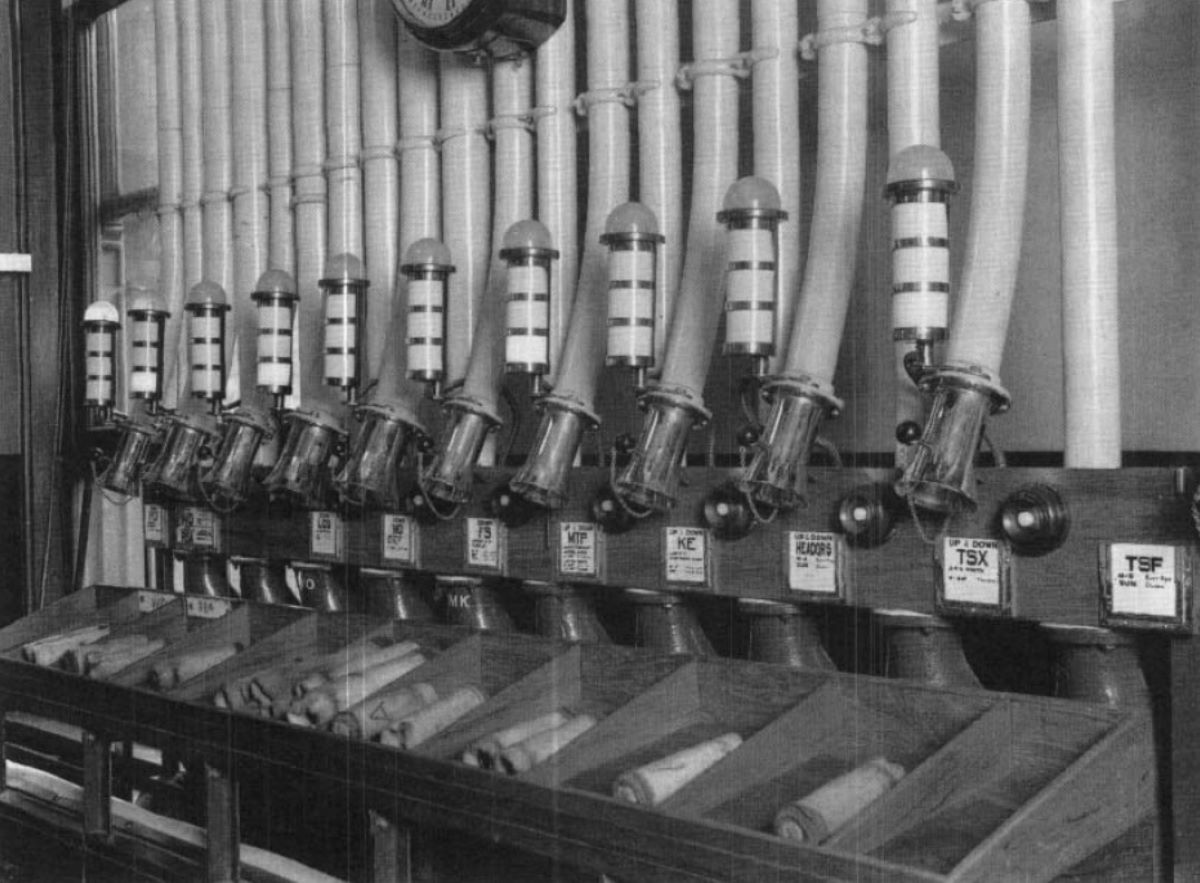Lost Underground Pneumatic Tube Systems Of Paris: Forgotten Air Messaging Networks

Have you ever heard of the underground pneumatic tube systems in Paris? These forgotten networks once buzzed with activity, sending messages across the city through a series of air-powered tubes. Imagine a time before emails and text messages, when letters and small packages zipped beneath the streets at lightning speed. This fascinating system, which began in the late 19th century, played a crucial role in communication for decades. Though now obsolete, the remnants of these tubes still lie hidden beneath Paris, a testament to the city's innovative past. Join us as we delve into the history, mechanics, and eventual decline of this unique mode of communication.
The Origins of Paris' Pneumatic Tube Systems
Paris, known for its iconic landmarks, also hides a fascinating secret beneath its streets. The pneumatic tube systems once played a crucial role in the city's communication network. These underground air messaging networks transported letters and small packages swiftly across the city. Let's explore some of the key locations where these forgotten systems once thrived.
Central Post Office
The Central Post Office in Paris was the heart of the pneumatic tube network. From here, messages were sent to various parts of the city, ensuring quick and efficient communication.
- Central Post Office: Located in the 8th arrondissement, this building was the main hub for the pneumatic tube system. It connected to multiple other stations, making it a vital part of the network.
Gare de Lyon
Gare de Lyon, one of Paris' major railway stations, also played a significant role in the pneumatic tube system. It facilitated the rapid transfer of messages and packages to and from the station.
- Gare de Lyon: Situated in the 12th arrondissement, this station's pneumatic tubes connected to various parts of the city, ensuring that messages could be sent quickly to travelers and businesses alike.
Hôtel de Ville
The Hôtel de Ville, Paris' city hall, was another key location in the pneumatic tube network. It helped maintain efficient communication between different government offices.
- Hôtel de Ville: Located in the 4th arrondissement, the city hall's pneumatic tubes connected to other government buildings, making it easier for officials to communicate and share important documents.
La Bourse
La Bourse, the Paris stock exchange, relied heavily on the pneumatic tube system to keep up with the fast-paced world of finance. Messages and documents needed to be sent quickly and securely.
- La Bourse: Found in the 2nd arrondissement, the stock exchange's pneumatic tubes ensured that financial information could be transmitted rapidly, helping traders stay informed and make timely decisions.
Bibliothèque Nationale de France
The Bibliothèque Nationale de France, the national library, also utilized the pneumatic tube system to manage its vast collection of books and documents. This helped streamline the process of requesting and delivering materials.
- Bibliothèque Nationale de France: Located in the 13th arrondissement, the library's pneumatic tubes connected various sections of the building, allowing staff to quickly retrieve and deliver requested items to patrons.
Les Halles
Les Halles, the central market of Paris, used the pneumatic tube system to facilitate communication between vendors and suppliers. This ensured that fresh produce and goods could be ordered and delivered efficiently.
- Les Halles: Situated in the 1st arrondissement, the market's pneumatic tubes helped vendors stay in touch with suppliers, ensuring that they could quickly restock their stalls with fresh products.
Musée du Louvre
Even the Musée du Louvre, one of the world's most famous museums, had its own pneumatic tube system. This allowed staff to communicate and coordinate the movement of artworks and exhibits.
- Musée du Louvre: Located in the 1st arrondissement, the museum's pneumatic tubes connected different departments, making it easier for staff to manage the vast collection of art and artifacts.
Conclusion
The lost underground pneumatic tube systems of Paris were once a vital part of the city's communication network. These forgotten air messaging networks connected key locations, ensuring that messages and packages could be sent quickly and efficiently. While they may no longer be in use, their legacy remains an intriguing part of Paris' history.
The Legacy of Paris' Pneumatic Tube Systems
Paris' pneumatic tube systems were once a marvel of engineering, connecting the city through a network of underground tubes. These systems, though now obsolete, played a crucial role in communication before the digital age. They were efficient, fast, and a testament to human ingenuity. Walking through Paris today, it's fascinating to think about the hidden tunnels beneath your feet that once buzzed with activity. While modern technology has taken over, the legacy of these air-powered networks remains a unique chapter in the city's history. Exploring this forgotten piece of Parisian heritage offers a glimpse into a time when innovation meant using air pressure to send messages across the city. Next time you visit Paris, remember the pneumatic tubes that once connected its people, shaping the way they communicated and lived.

